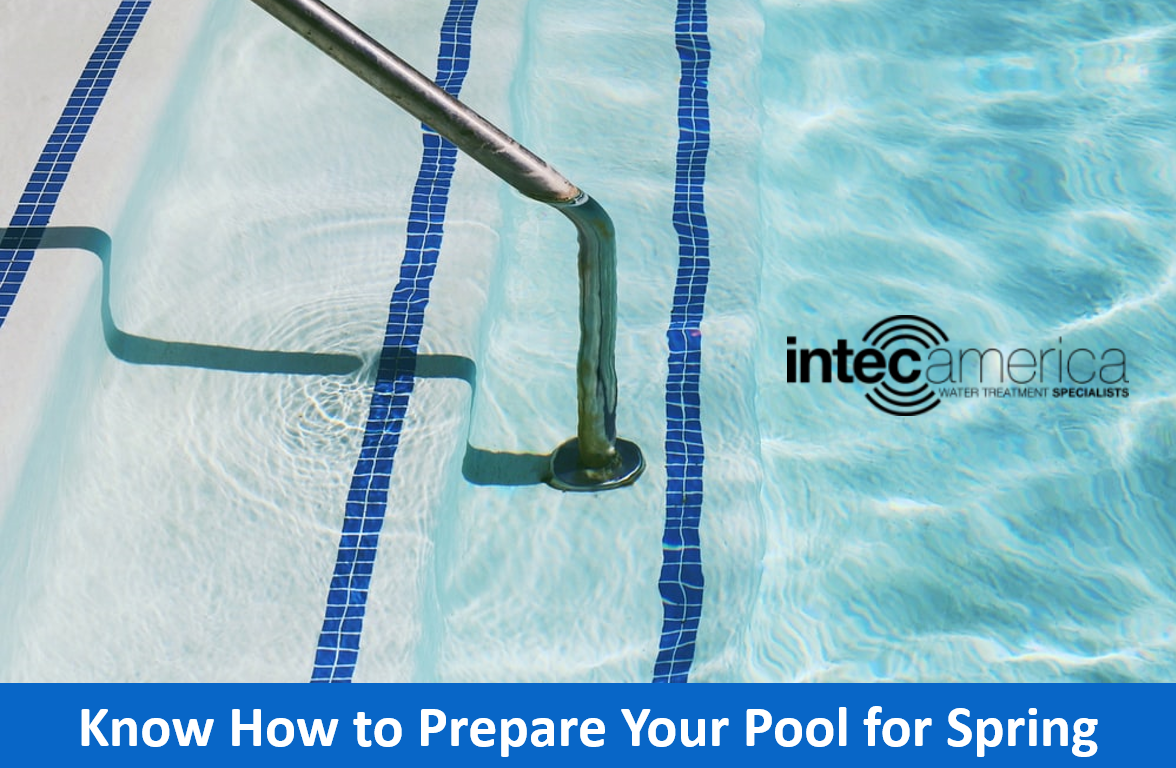Spring is a much-awaited season after winter and this is when the climate starts warming and nature appears beautiful. This is also the season that most swimmers look forward to because it gives them a reason to celebrate the natural beauty while enjoying their favorite activity. Most pool owners plan pool parties to warm up with their families and friends. Does it mean the pool is technically ready for the season and requires no maintenance? Well, the answer is no. In many areas, the pool owners usually close the pool during Winter. Thus, making it safe, clean, healthy, and swim-friendly becomes quite a task for them. Are you a pool owner who is looking for tips for preparing your pool for spring? If that sounds yes, this post offers some easy-to-follow tips for preparing a swim-ready, healthy, and clean pool.

A Few Easy-to-Follow Steps to Prepare Your Pool for Spring
Preparing a pool for spring involves several steps, which need to be performed meticulously to assure effective results.
- Clean the Pool Cover: Many people use a solid safety cover or winter cover to protect their pool during winter. If there is water on the cover then remove it using a cover pump. Then remove the debris and leaves from the cover using a blower. If left as it is, the debris may fall into the water and dirty the pool.
- Remove, Clean, and Store the Pool Cover: If you are doing it for the first time, perhaps, you may need professional help. Remove the pool cover slowly and clean the debris using the brush. Spray the cover and dry it. Sprinkle powder on both sides and let it dry, as this helps prevent the growth of mold on the cover. After drying, store the cover in a cool and dry place until the next season.
- Fill the Water to Normal Level: Although this may sound a little challenging, you can easily bring the pool to normal using a garden hose pipe.
- Check All Pool Equipment and Reconnect Them: Once you have finished all the above steps, next focus on the pool equipment. Check if all pool equipment is in good condition and reconnect them. The pool equipment may include your filtration system, pool ionizer, heater, pump, and so on. You need to reconnect the plumbing lines with a skimmer and the pool equipment if you own an above-ground pool.
- Remove Plugs from Pool Equipment: Next, remove plugs from the return lines and skimmer. Take care to remove the plugs only after the antifreeze drains completely. Ensure to reinstall the drain plugs in filter, pumps, heater, as well as other equipment.
- Switch On the Pool Equipment: After checking all the equipment, you can switch them on. For this, you can start with the pump. You can prim the pump, as well as turn on the filtration and circulation system.
- Check the Water Chemistry: This can be easily done using test strips and a test kit. Ideally, the pH levels must be maintained between 7.4 and 7.6, total alkalinity between 80 and 120 ppm, free available chlorine between 2 and 4 ppm, and calcium hardness between 200 and 400 pm. For a non-chlorinated pools, the pH should be between 7.0 – 7.4 with not as much emphasis on alkalinity and no chlorine or cyanuric acid levels should be detected.
- Adjust the Water Chemistry: Next, adjust the water chemistry to match the ideal values. In most cases, a chlorine shock in not necessary to open a swimming pool. An ionized swimming pool should never be shocked.
- Discoloration(s) on surface: Natural occurring metals like iron and manganese can discolor a pools surface. Leaves, nuts, and branches that remain on the bottom of a pool for an extended amount of time will create stains. Knowing the difference from an organic and inorganic stain will assist in using the correct treatment to remove the discoloration. Stain test kits are available and recommended before products are purchased and used which may not address the issue. Seek professional help if needed.
- Vacuum the Pool and Surroundings: After adjusting the water chemistry, try to vacuum the pool and surroundings.
- Start the Filtration and Pool Sanitation System/Process: This is the last step following cleaning the pool. You can run recirculation system to remove suspended matter. If you have an ionized pool, this is the time to start up the ionizer and build up the copper levels. The filtration system helps filter debris; however, pool ionizer systems help sanitize the pool and prevent the growth of algae.
While implementing these tips, it is equally important to focus on the quality of the solutions. Intec America specializes in water treatment technologies for your swimming pools, spas, and home water storage systems. The company was the first in the US to commercialize NASA research on copper ionizers and commercialize it for swimming pools. In addition to this, the company also offers a wide range of water treatment solutions such as water softeners, filtration equipment, reverse osmosis systems, copper ionization, ozonation, and U/V light.
Recent Blog Posts
- What is the Best Chlorine-free Treatment for Your Swimming Pool?
- 5 Benefits of Using Reverse Osmosis Systems for Water Filtration
- Ozone Water Treatment – Benefits and Uses Explained
- Pool Chlorine Shortage in 2021 and Effective Chlorine-free Pool Alternatives
- Pool Care Tips That Make the Pool Maintenance Effective
- Guide to Water Softener Issues, Maintenance Tips, and Replacement
- Hot Tub Chlorine Alternatives: What is Right for You
- Point-of-Use Vs. Point-of-Entry Water Treatment Systems: Features and Comparison
- Water Softener Vs Reverse Osmosis: What is Right Your Application?
- How Often Should You Clean a Swimming Pool?
- Opening your Pool
- How to Prepare Your Swimming Pool for Summer?
- How Often Should You Test Your Pool Water?
- 9 Healthier Alternatives to Chlorine for Swimming Pools


